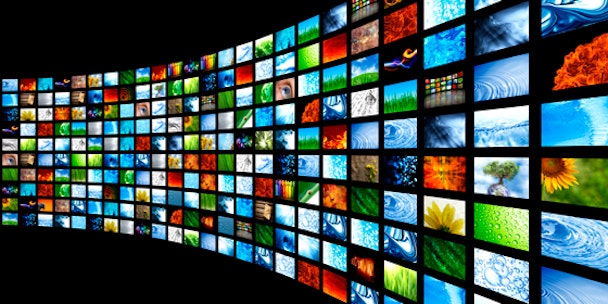Three trends that will secure the future of broadcast TV
It’s become fashionable lately to be a pessimist about broadcast TV. Industry insiders wring their hands over millennials’ shift to mobile video and their parents’ cord-cutting. Some take the naysaying even further: Netflix’s CEO has claimed that by 2030 broadcast will cease to exist.

Television
But, to paraphrase Mark Twain, reports of broadcast’s demise are greatly exaggerated. The truth is that broadcast is a robust and resilient industry that’s survived existential crises before. Remember when broadcast was going to get killed by cable TV? Both mobile-savvy millennials and cord-cutting Boomers still watch TV in huge numbers — they’re just consuming it differently.
In other words: there’s no reason to believe that broadcast’s going anywhere anytime soon. But like everything in the digital age, the industry is changing rapidly. Here are three ways broadcast is adapting to the 21st century — and ensuring its own future in the process.
Broadcasters are getting technical
Broadcasters generally focus on making great content, not on how to deliver it. But today, they can’t afford to ignore delivery anymore. They must get their content into the hands of viewers not just through traditional over-the-air TV or cable, but also via smartphones, laptops, desktops and tablets.
There's an unprecedented technological challenge. There are more than 24,000 different Android devices in existence; add to that iPhones 4 through 7, Roku, Chromecast and Apple TVs, and you’ve got an overwhelming number of devices with vastly different needs. Each of these devices require slightly different encoding in terms of screen size, ad content and stream quality. People expect to watch the same video on all of them, with similar quality for each experience, without ads causing undue interruption.
Broadcasters are not technologists — and they shouldn’t have to be. But in the next 5-10 years, they are still going to need to become experts in video streaming. The space is still extremely fragmented, and many vendors only specialize in solving one part of the problem, with different companies handling areas like ad insertion, encoding, or analytics. Broadcasters need a certain amount of technical know-how simply to pick their partners well, much less get the best results from them.
Faced with this complexity, more and more broadcasters will turn to a solution that allows them total control over the viewing experience: creating their own proprietary app. But even that trend may not unfold quite the way industry insiders expect.
Proprietary apps are proliferating:
Today, more and more content creators are delivering their content directly to consumers via proprietary apps — think ESPN.com or any of the various Disney apps. It’s the easiest way for a content creator to deliver the exact viewing experience they want and get the ad dollars they want, full stop.
Big cable companies are reasonably concerned about this trend. If millennials can pay $5/month to stream their favorite shows online, why would they shell out $250 for a bundled cable package, full of extra channels they don’t want? Broadcasters are concerned, too—even ones like ABC that were early to the streaming video game (ABC started streaming videos online way back in 2007 — the same year that Netflix did). Even with a robust online presence, broadcasters see a good chunk of revenue from cable subscriptions. What would happen if that revenue dried up in already uncertain times?
But their worries are premature: it’s unlikely that the cable package will ever disappear entirely. Think about it this way: if you’re a Millennial devoted to watching TV online, do you want to download 90 separate apps for the different channels you want to stream? Of course not.
Though direct-to-consumer is going to explode over the next five years, it’s never going to be the only solution people use. Instead, the equilibrium is going to be a blend of direct-to-consumer options with aggregators like Hulu and Netflix and yes, traditional cable packages. After all, that need for convenience — the one-stop shop — is the reason cable companies came to exist in the first place.
But tomorrow’s cable packages won’t look the same as today’s.
Cable packages are morphing:
When industry insiders claim that “no one is paying for cable,” that’s not really true. They’re just paying for individual channels, via an ESPN.com subscription, for instance. Or they’re subscribing to an aggregator like Netflix or Hulu. In the future, cable companies themselves will begin to offer more of these micro-subscriptions, breaking up the expensive bundled packages. People will still pay for the convenience of having all their channels in one place — they will just want to pick and choose which ones they pay for.
Cable companies will have to lower their costs, but they’ll survive. And they’ll continue to be an income stream on which, with the help of robust direct-to-consumer platforms and strong technical support, broadcast TV can thrive. Broadcast television will weather this crisis, as it’s weathered crises before. It’s simply a matter of smart adaptation.
Mary Kay Evans, CMO of Verizon Digital Media Services. With contribution by Nathalie Lagerfeld of Hippo Reads.
You can access the Future of TV hub here. Sign up to receive The Drum's Future of TV newsletter.
